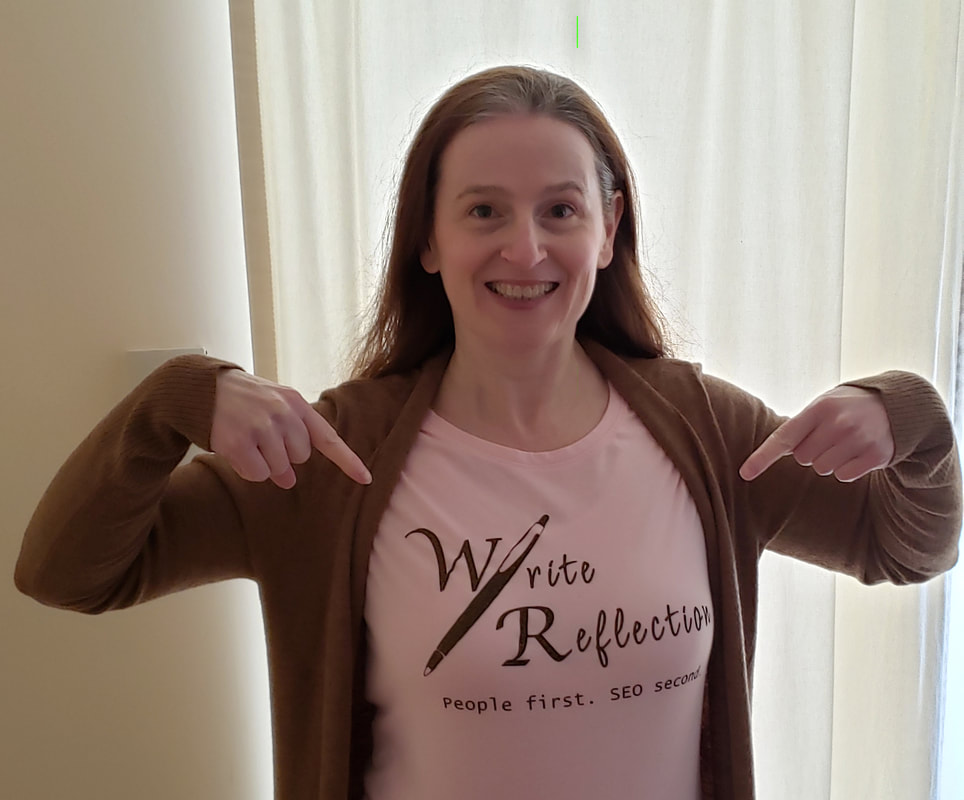|
Dishonest. Sneaky. Unethical. Call it whatever you want, but the strategy remains the same. When businesses manipulate SEO practices to deceive consumers, they risk harming their reputations and customer base. Unethical SEO practices extend far beyond Black Hat SEO techniques like keyword stuffing and paid backlinks. They are more duplicitous, often deliberately misdirecting consumers to websites or other digital content that have nothing to do with their user intent. These tactics blatantly violate search engine rules and best practices. What is SEO?SEO is short for Search Engine Optimization. Great, so what does that even mean? To make it simple for those outside the industry, SEO just means you’re engaging in certain strategies to make your digital content more visible to your target audience. SEO keywords are one component of an overall solid SEO strategy. Using specialized software can help identify which SEO keywords you should be using for your brand. Long-tail keywords often correlate with questions consumers type into search engines when they’re looking to solve a problem. For instance, if you wanted to know if it was safe to take Tylenol and Advil together, you might ask Google, “How much Tylenol and Advil can I take together?” Why do businesses use bad SEO practices?Bad SEO practice cuts corners and cheats the accepted code of conduct with one goal in mind: to achieve immediate ranking results. Sometimes the purpose of bad SEO is even more nefarious. Some businesses use SEO keywords that have nothing to do with their industries to deceive consumers into thinking they’ve gone to a site that has what they need. What are popular bad SEO strategies?Like every industry, there are bad apples in SEO. They don’t want to take the time to organically rank well in search results. To do so requires content development, keyword research, and on-site optimization. There are many bad SEO strategies companies can use to cheat the system. Here are two of the most deployed tactics. Blackhat Google AdsGoogle Ads is a marketing service that allows businesses to pay to boost their rankings in search results. When you pay to boost an ad about your business, it can appear in Google search, Google Maps and across all partner sites. Google Ads clearly are marked as such; however, some consumers don’t notice or don’t understand the designation when they see it. They trust they’ve been directed to a reputable site with information relating to their search. The problem is that Blackhat SEO practitioners use a technique called cloaking. It tricks crawling bots on search engines into promoting sites containing specific keywords. Users can find themselves on a website that has nothing to do with their original search query because the website used cloaking to trick Google into sending them there. Clickbait titles are a perfect example of cloaking. A website may create an attractive headline about a specific topic to attract visitors. However, the content below the headline has nothing to do with the title. Negative SEO campaignsNegative SEO campaigns target competitors to tarnish their reputation and steal search engine rankings for important keywords. Sometimes this Blackhat SEO technique involves hijacking a website with questionable banner ads. Other times, it can be more complex and sophisticated. Here are a few other ways negative SEO campaigns work.
How do search engines spot bad SEO?Search engines like Bing and Google have ways to spot when a web page is deceiving an end user. We already discussed cloaking, which is one of the most common forms of deception. If search engines catch you cloaking your site, they can penalize you. In Google’s case, its PageRank algorithm can downgrade or delist your site from its search engine. Another way search engines discover bad SEO practices is through reports from end users. If you suspect clicking fraud, you can file a webspam report. Suspected negative SEO campaigns can be reported using the Disavow Links Tool. Sometimes businesses unintentionally cloak their websites. For instance, they may be using alt text for images on pages that do not accurately describe the content on the page. Check your alt tags to make sure you’re not an accidental offender. How can you spot deceptive SEO companies?Deceptive SEO companies exist, and they entice businesses with promises of quick results. When asked about their methods, they may mention some of the following bad SEO practices. Bolded textBolded text signifies to a search engine that the words are important for your readers. Maybe they answer a direct question. Maybe they are a critical SEO keyword. Using this technique isn’t bad unless you overuse it. If your SEO provider is bolding entire paragraphs or multiple sentences throughout the copy, it can ruin the user experience. Write for people first and search engines second. It’s our mantra here at The Write Reflection® for good reason. Complicated link schemesLinking schemes come in many variations. Any SEO company that guarantees they can get you thousands of links back to your site in a few days is using deceptive SEO practices. Some companies have networks of blogs that exist for the sole purpose of supporting these complex plots. Hidden linksAnother devious SEO technique is hiding links in the code or footer of a website. They’re hidden because coders make them the same color as the website background so they’re not visible to the naked eye. They often are unrelated to the website on which they appear and can get you banned by Google in a hurry. Keyword stuffingYes, my friends, there is such a thing as too many keywords on your site. How do you know if an SEO company you’ve hired (or are thinking of hiring) engages in keyword stuffing? Well, the practice seriously downgrades the quality of your copy. There are only so many times you can use the same long-tail keyword in a 600-word piece of copy before it becomes unnatural sounding. Keyword stuffing also makes it difficult to provide value to your end user. What’s the best way to use SEO?If you’ve found yourself involved with a company that does any of these things, run – don’t walk – away from them as quickly as you can. White Hat SEO may take longer to achieve results, but it’s worth the wait. Here are just a few of the ways The Write Reflection® uses SEO best practices to grow your audience and boost your search engine ranking. Claim and maintain a Google My Business listingIf local search is important for your brand, a great way to achieve results is by claiming your Google My Business (GMB) listing. Make sure all the information in the listing is accurate. It should include hours of operation, your website and contact information. GMB listings also can support customer reviews. That’s another White Hat SEO way to attract more visitors to your website. If you or someone from your business takes the time to respond to customer reviews, it can boost engagement and your brand reputation. Focus on mobile firstRoughly 90 percent of Americans access the internet from mobile devices. If your business hasn’t updated its website to prioritize mobile quality, you’re hurting your SEO ranking. Google has emphasized mobile-first websites in search results since 2016. Most website development platforms automatically optimize your website to provide a smooth experience for mobile users. If you’re not sure how yours is performing, access it from your own mobile device. If there are too many display ads or email opt-in pop-ups, you could be annoying the crap out of your website visitors. Prioritize people, not search enginesGoogle and other search engines have finally come around to the notion that it’s best to reward quality content over keyword-bloated drivel. Consumers don’t want to be directed to a website that is full of a keyword but doesn’t answer their query. At The Write Reflection®, we strike a delicate balance between using the appropriate number of keywords and crafting high-quality content that adds value. We satisfy user intent and leave your visitors eager to return to your site. Need help figuring all this SEO stuff out? You’ve come to the right place. Drop us a line. We’d be happy to schedule a hassle-free consultation to discuss your SEO needs. AuthorShari Berg has known she wanted to be a writer since she was old enough to hold a pencil in her hand. She believes everyone has a story to tell, and it’s her job to discover it. Shari owns The Write Reflection, a Pittsburgh-based copywriting and content writing company that empowers small business owners to wield the power of words.
0 Comments
SEO keyword stuffing happens. A lot. I should know because SEO copywriting is my forte. I’ve been doing it for more than 25 years. Every good SEO strategy requires the right combination of keywords to get your digital assets found online. Do you know what doesn’t work? Telling an SEO copywriter to use as many industry-relevant keywords as they can squeeze into every piece of copy written for your brand. It doesn’t help that many SEO keyword tools still push this narrative, forcing you to create copy that can sometimes be downright unreadable in the pursuit of squeezing the predetermined number of SEO keywords in. I’m not going to tell you that there wasn’t a time when keyword density mattered. Once upon a time, the king of all search engines – that would be Google, by the way – decided that if you wanted it to direct searchers to your website, you had to use the same three keywords in every sentence. OK, well maybe not every sentence, but close to it. If you wanted to rank, you had to play the game. There’s only so many times you can use the longtail keyword “car repairs Pittsburgh” before it becomes repetitive and boring. Yet, if your SEO copywriter followed Google’s old requirements, you likely ended up with gibberish that didn’t add much value to your target audience. Thankfully, Google has seen the error of its ways and no longer rewards websites that overuse keywords. Now, they value quality over quantity. The Write Reflection® already was ahead of the game on quality vs. quantity. As a trained journalist, I’ve always been keenly aware of the value of storytelling in any copy. My clients have been getting well-crafted copy that adds value to their target audience since I’ve been in business. Why do we need SEO keywords, anyway?SEO keywords refer to the single words and phrases people use when searching for something online. Maybe they’re looking for a new dining room table or the latest trends in fashion eyeglasses. They type in what they want to know, and Google spits out some possible places to find the information they seek. Single words or complex phrases can be used for SEO purposes depending on your industry. For instance, if you repair automobiles, you might want to include “mechanic,” “automobile repair near me” or “how do I find a mechanic to fix my car” strategically throughout your digital copy. SEO keywords still are a necessary component of any digital content. I’d be lying if I tried to convince you otherwise. The key is to balance SEO keywords with informative copy that converts. SEO keywords might help users find your content, but they won’t help you build a target audience or transform casual visitors into brand loyalists. For that, you need to understand user intent. What is user intent?User intent trumps SEO keyword stuffing every time. Why? Because (you guessed it), Google says so. I’m not shy about disagreeing with Google – which you know if you’ve read my blog or followed me on social media). However, this is one time we’re in agreement. Now that I’ve given you my trademark sarcastic quip, let me explain the real reason user intent matters. SEO obsesses over numbers and metrics. User intent focuses on the reasons behind why someone is searching for a particular product, service, or topic. After all, you can’t sell your brand if you don’t understand why someone might need it. There are three types of user intent you must consider: informational, navigational, and transactional. Informational User IntentInformational searches happen when someone seeks a specific piece of data. For instance, a student researching a paper on the First Amendment of the U.S. Constitution would type in a combination of keywords describing their need. Google would direct them to academic studies and other sources of information to answer their search query. Navigational User IntentAny time you’ve used Google Maps or another GPS, you’ve conducted a navigational search based on some location you needed to find. Maybe you’re visiting a new city during a job interview and have an urge to satisfy a caffeine craving. If you asked Google Maps to plot out coffee shops near you it would generate a list based on your location. Transactional User IntentTransactional searches happen when someone is looking for a specific product or service. Let’s say you need to buy a new swimsuit for vacation. You’d likely type “women’s swimsuits” into Google’s search bar and wait to get a list of all the brick-and-mortar and online retailers that sell swimsuits. Does ignoring user intent hurt your ranking?Some SEO experts would argue that it doesn’t, but I’d wholeheartedly disagree with them. Failing to consider user intent when crafting digital copy can weaken your SEO copywriting strategy. You’ll end up with catchall content that speaks to everyone and no one at the same time. Visitors to your webpages might end up confused. I frequently tell my clients that without user intent, I can’t structure a landing page experience that serves their target audience. Keywords are great, but you must understand why someone is typing in a specific keyword if you have any hope of creating content that speaks to them once they arrive on your page. Otherwise, it’s just another missed opportunity. Be realistic about SEO keyword stuffingLet me be very direct. You can’t fool Google’s algorithms. They’re so sophisticated they easily can spot SEO keyword stuffing junk vs quality content at a quick glance. That’s why at The Write Reflection® our motto is, “People first. SEO second.” We specialize in writing content for people, not search engines. Your digital content should never compromise on readability in favor of SEO keywords. It’s a recipe for failure every time. AuthorShari Berg has known she wanted to be a writer since she was old enough to hold a pencil in her hand. She believes everyone has a story to tell, and it’s her job to discover it. Shari owns The Write Reflection, a Pittsburgh-based copywriting and content writing company that empowers small business owners to wield the power of words. |
Categories
All
Archives
April 2024
|








